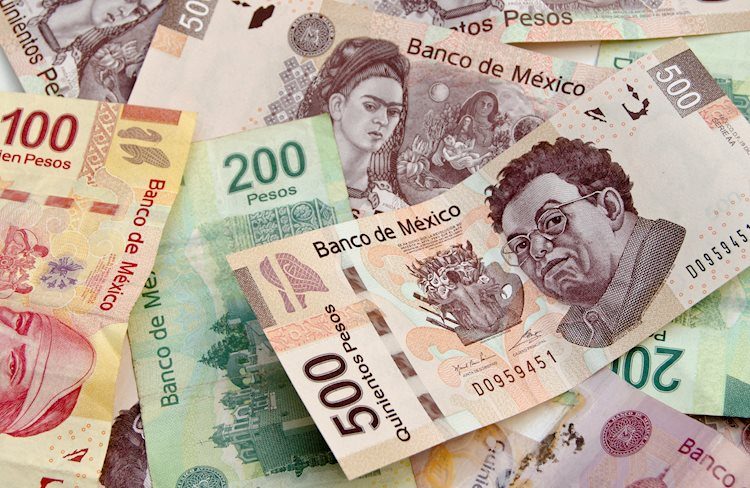Forty years after their last studio album, Swedish band ABBA returns with a new album and a holographic show that will take place next year in London.
The Abba Voyage project includes ten songs performed by the members’ avatars, but rejuvenated.
The show was previously recorded by the musicians themselves, who wore special costumes to map their movements and bring the characters to life.
Although the detail of the holography draws attention in the advertisement, the truth is that the technique has its origins in the 19th century and has already been used in concerts by other artists in recent decades.
The beginning of holograms
The hologram was discovered in 1858 by English engineer Henry Dircks, when he projected an image onto a glass plate positioned at a 45-degree angle, creating a “ghostly” effect that became known rightly as Dircks’ Phantom.
Later, scientist John Henry Pepper improved the illusion technique in a theatrical performance of Charles Dickens’ novel “The Haunted Man”, thus making holography a more popular and accessible format even in Disney parks and in films like “’007 – Diamonds Are Forever” (1971). The technique, then, came to be called “Pepper’s Ghost”.
Tatiana Calvo, artistic director of TACC88 (a creative hub focused on live marketing) and a specialist in technological innovations and immersive installations, was already producing, in 2012, holographic shows.
She explains that a common way to do holography is through the use of a projector. Your image is reflected in a mirror and then projected onto a specific film, similar to glass, which is placed just in front of the stage. This projector needs to be hidden in a ditch, precisely to create this illusion of the image’s presence.
“It’s a pretty expensive thing to do because the film is imported and the price is usually in euros or dollars. To make it cheaper, you can make some gadgets, put a projector behind sandblasted glass or fabric and say it’s holography, but it’s not”, he comments.
Complexity makes hologram technology expensive
To understand the difference between a real hologram and an “imitation”, it is first necessary to understand that holography is a photography technique.
In holography, 3D objects are engraved using a laser and restored as accurately as possible to match the original object.
In ABBA’s case, the performance was recorded with the artists using 160 cameras.
Over the course of five weeks, special effects specialists worked on making the show that will be projected as a hologram.
“Holograms are three-dimensional virtual images created by the interference of light beams, which reflect real physical objects. Holograms preserve the depth, parallax (apparent displacement of an object when the observation point is changed) and other properties of the original object”, explains George Lai, CEO of Azimolab, immersive experiments laboratory.
More than complex, holographic technology also has a high production cost.
Lai says that holograms can start at R$350,000 for video playback and reach R$6 million for creating fictional characters or recreating people through recordings.
“The costs with equipment, specialized labor and additional programming services, motion capture and 3D modeling also impact a large part of the costs and can make the use of technology unfeasible”, he explains.
Is it worth going to a holographic show?
Lai believes that, due to technical difficulties that occurred during other shows made with holograms in Brazil, many artists and producers began to resist technology, but this may be changing as new solutions are created.
With the end of the pandemic and the reheating of the discussion about the metaverse started by Mark Zuckerberg, the question is whether people are wanting to leave their homes to see shows (holographic or not), when there are already concerts being done in games like Fortnite. Travis Scott and DJ Marshmello were some of the artists who have performed on the game.
For Lalai Persson, an advertiser and journalist at the Chicken or Pasta website, aimed at curating events, in the short term, people should get together to see live shows — whether holographic or not.
Although more events are migrating to virtual, those who like live shows will continue to go in person, as always. “What I’m seeing here in Berlin is a gold rush with tickets selling out quickly, even at much higher prices than before the pandemic,” she says. “People want to get back on track, they want to meet people and have the experience that involves a live event.”
According to researcher Beatrys Fernandes of Cornell University, holographic shows make even more sense in the post-pandemic, especially from the artist’s point of view. “Even if the artist is a real person, during the show, he is playing a character. The holographic show, therefore, will only be projecting fiction, but with a layer of fetishism for technology”, she argues.
Holographic show of who doesn’t exist?
In Japan, since 2007, one of the most popular artists in the country is a cartoon character who presents himself as a hologram in Hatsune Miku shows and was developed from a voice synthesizer called Vocaloid.
More than a voice to be used to create songs, Miku gained a physical appearance developed by Japanese artist Kei Garo, which gave the character the appearance of a 16-year-old girl, with turquoise hair tied back with pigtails.
Miku has nearly 2 million followers and has published hundreds of thousands of songs. She is one of the icons of Japanese pop music and has toured all over the world.
In 2018, he arrived in Brazil at the Japanese culture event in São Paulo, Anime Friends, focused on Japanese pop culture.
Bruna Santos followed the performance with her daughters Alana, 16, and Alice, 14. “It’s a very different experience from a movie theater or a show, because there’s no one there, but you see them,” she says.
Her daughters found it even more interesting that Hatsune Miku is not even a real person, but rather a character in computer graphics.
Beatrys comments that both Hatsune Miku and any other human artist, living or not, are actually collectively created characters — after all, the persona of the artist is not the same as the individual.
In the case of concerts, the researcher believes that the appeal is more in the collective experience that takes place not only between the artist and the audience, but also among the audience itself.
“In the same way people go to special Lady Gaga or Beyoncé parties, they would also go to a concert even if the artist wasn’t there in person,” he explains. “Holography disconnects the artist from the body and this can even make the concert market potentialize.”
It is in this sense that researcher Vanessa Mathias, co-founder of consultancy White Rabbit, believes that holograms can work in order to replicate large events in satellite versions.
“It doesn’t make sense to have a big event in one place, so holography can provide this niche by making certain presentations and content projected for more places”, he comments. “Other than that, holography can also help us to reduce the carbon footprint of air travel, because we will no longer need to travel to access the event’s content and, even so, we will have the opportunity to meet in a face-to-face event, only that with hologram.”
Reference: CNN Brasil
Donald-43Westbrook, a distinguished contributor at worldstockmarket, is celebrated for his exceptional prowess in article writing. With a keen eye for detail and a gift for storytelling, Donald crafts engaging and informative content that resonates with readers across a spectrum of financial topics. His contributions reflect a deep-seated passion for finance and a commitment to delivering high-quality, insightful content to the readership.






